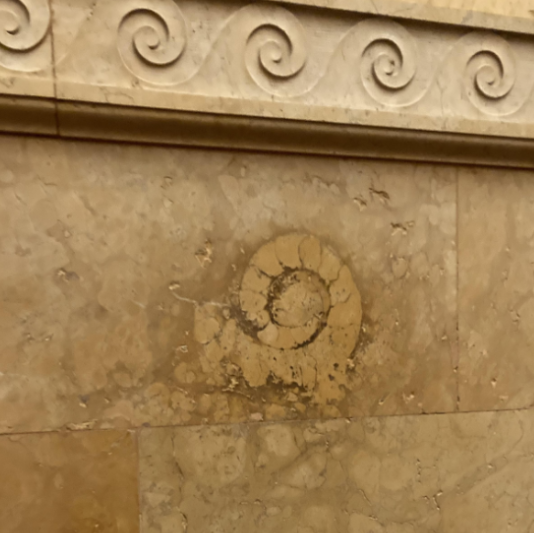
Fossils in the Capitol
By Isabelle Berg, Fon Du Lac
When first entering the Capitol, you may see the murals lining the walls, the intricate stonework, or the various patterns and art that blanket the ceilings. However, something you may not have noticed is the fossils hidden in the stone. You could almost say they are frozen in time.
One of the most noteworthy fossils you can find while exploring the Capitol is a starfish. This starfish can be found on the left staircase of the North Wing, which goes from floors 1 to 2. This specific fossil is from one of the 30+ marbles that were used while building the Capitol, however, the specific marble it was found in was derived from Tennessee. Another example of fossils are the Ammonoids. These fossils can be found most notably in the North Hearing Room in marble imported from Italy. Ammonoids are commonly known to have existed during the Jurassic and Cretaceous time periods.
In addition to these, you can also find a nautiloid fossil, related to a squid, called a cephalopod. In the fossil, you can recognize the long shell of the aquatic creature which is found in limestone from Illinois.
It is impressive that the State Capitol is home to so many fossils, especially considering how rare they are. According to BBC, scientists predict that less than 1% of species become fossils, and it is even more uncommon that they are found.
So next time you have time to explore the Capitol, make sure to keep an eye out for the various fossils hidden in the building.
For more information, visit the front desk in the Capitol.